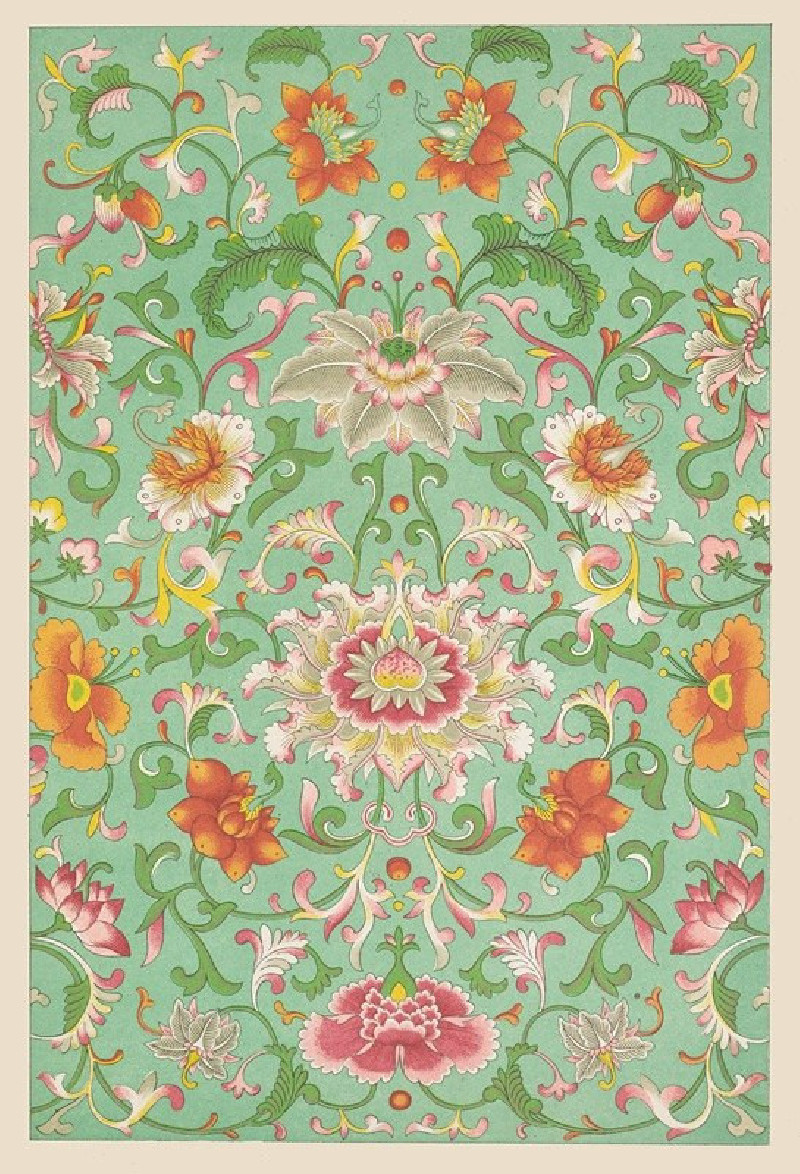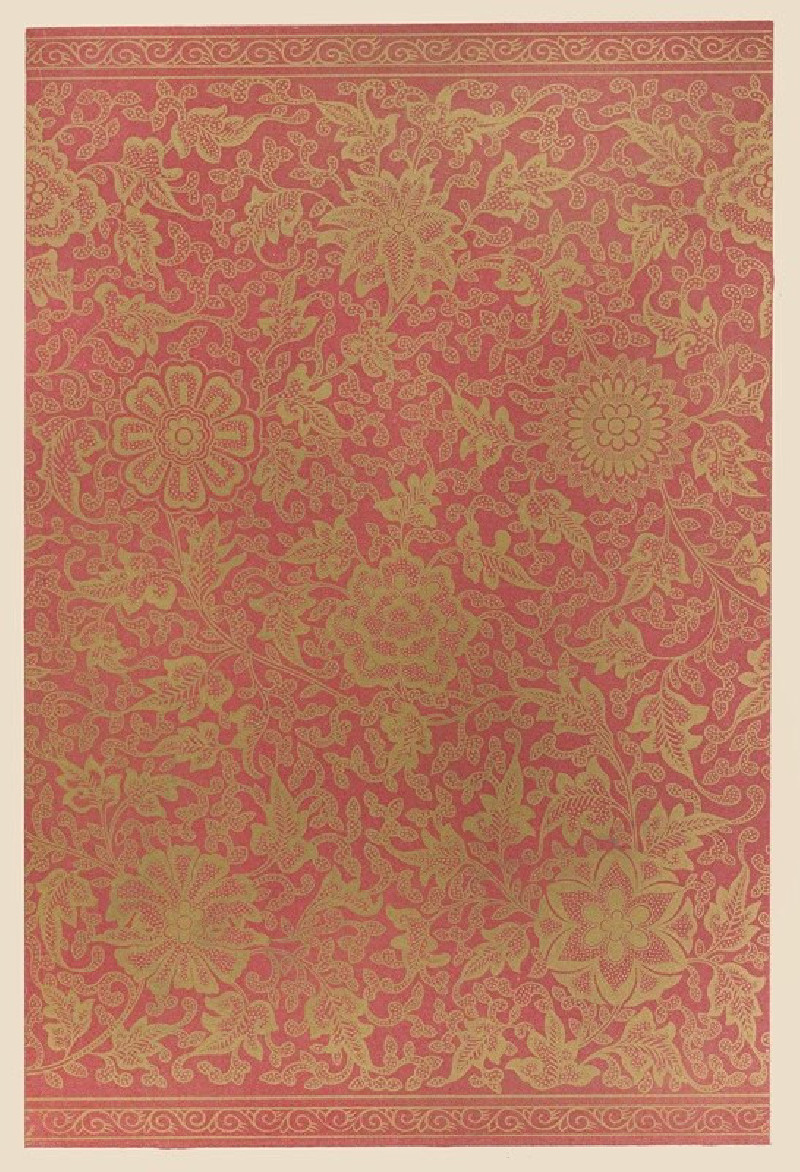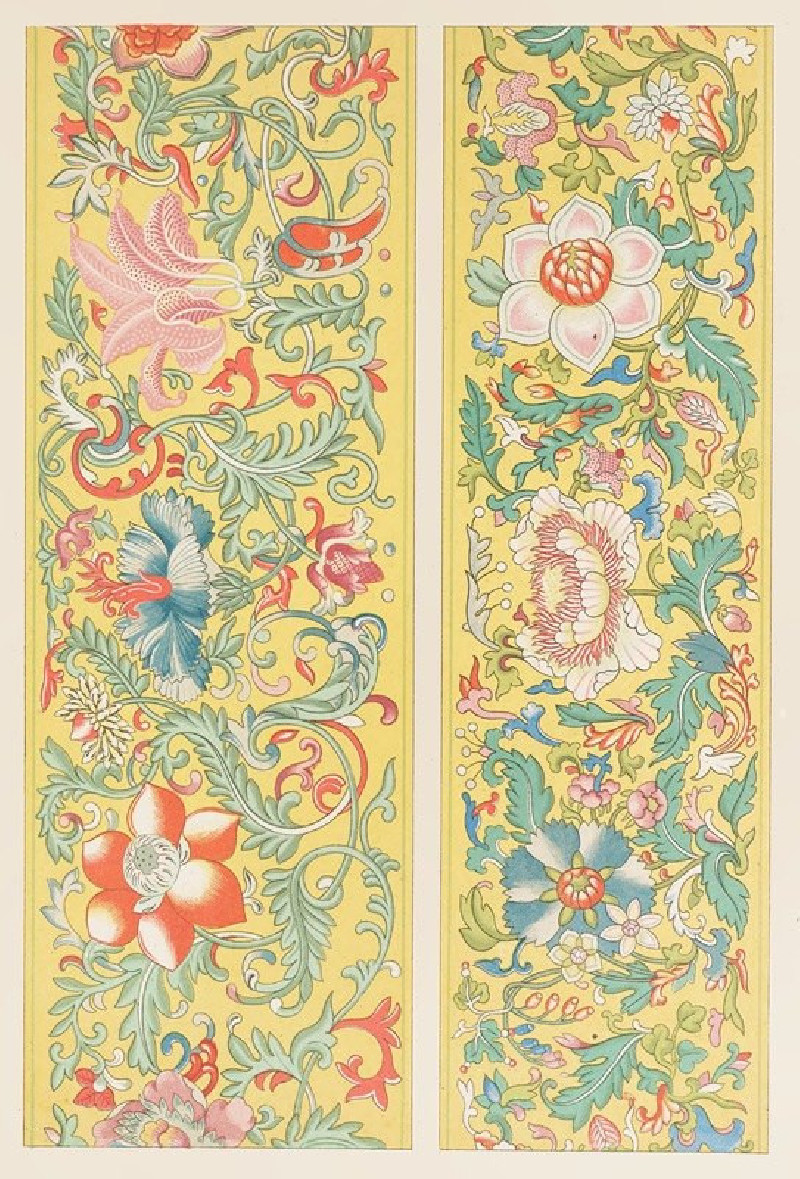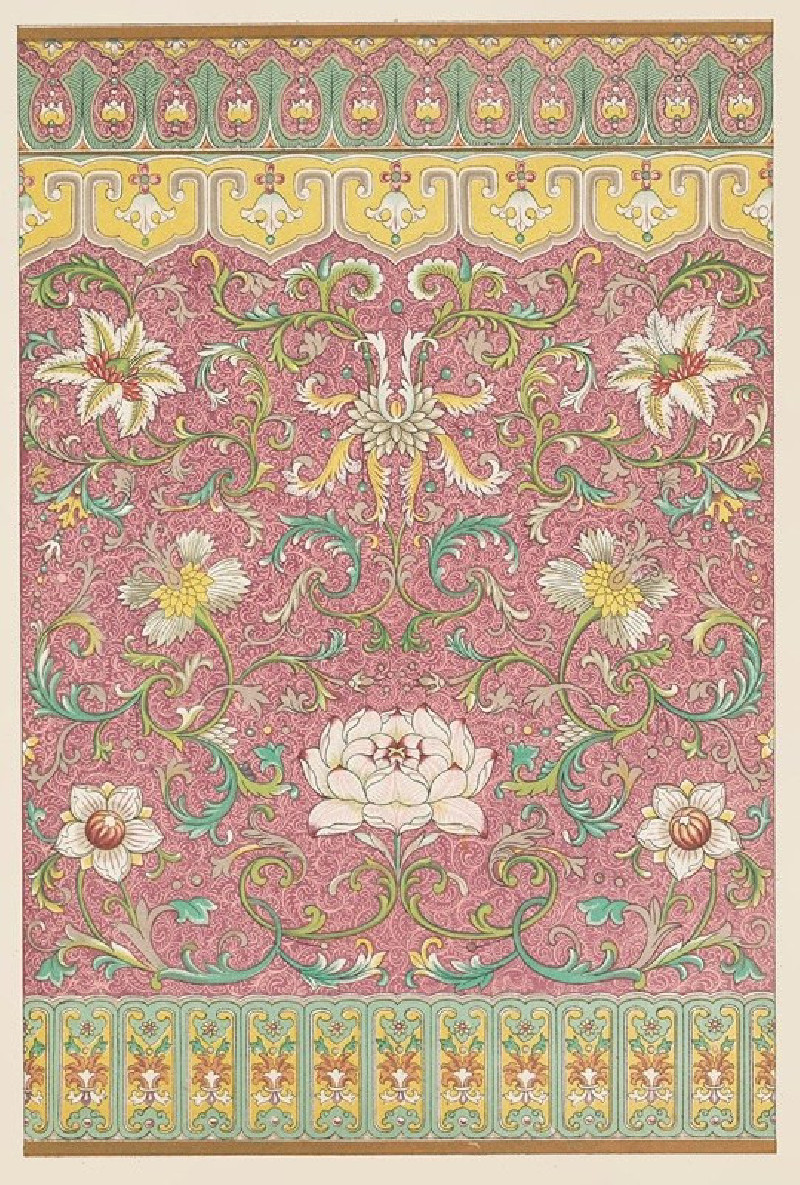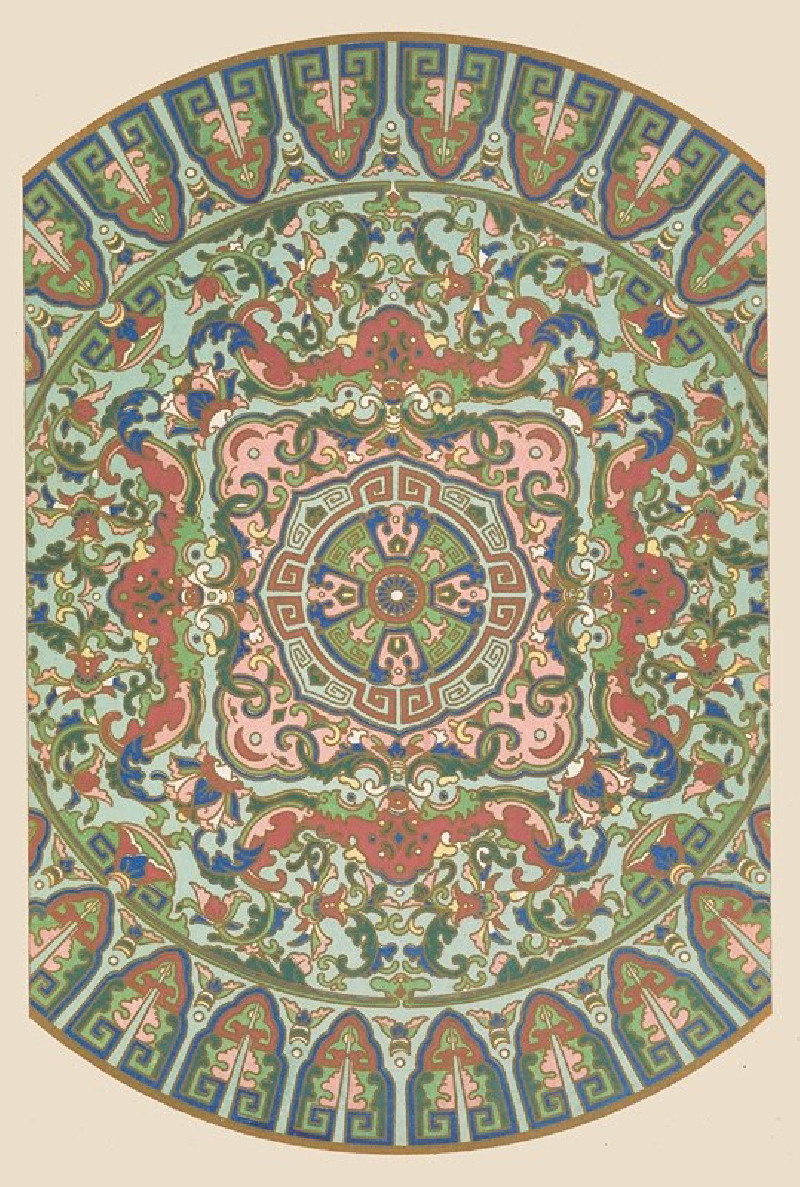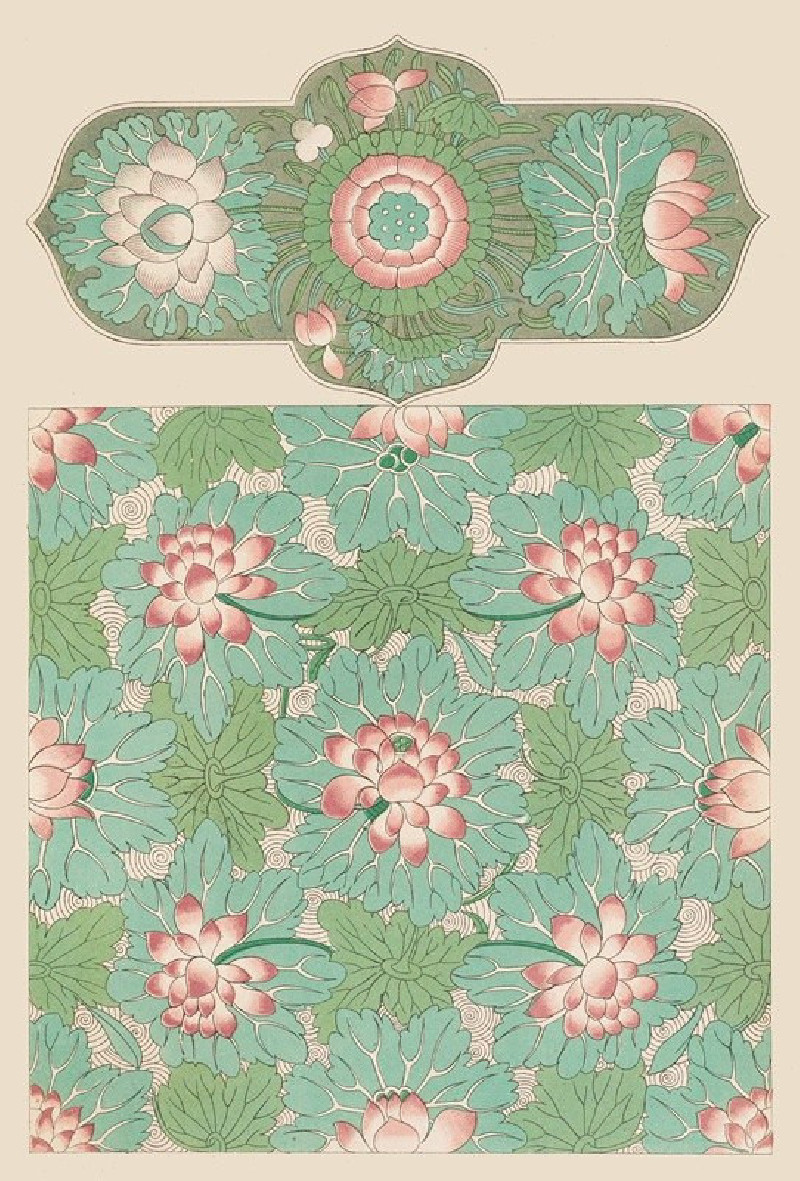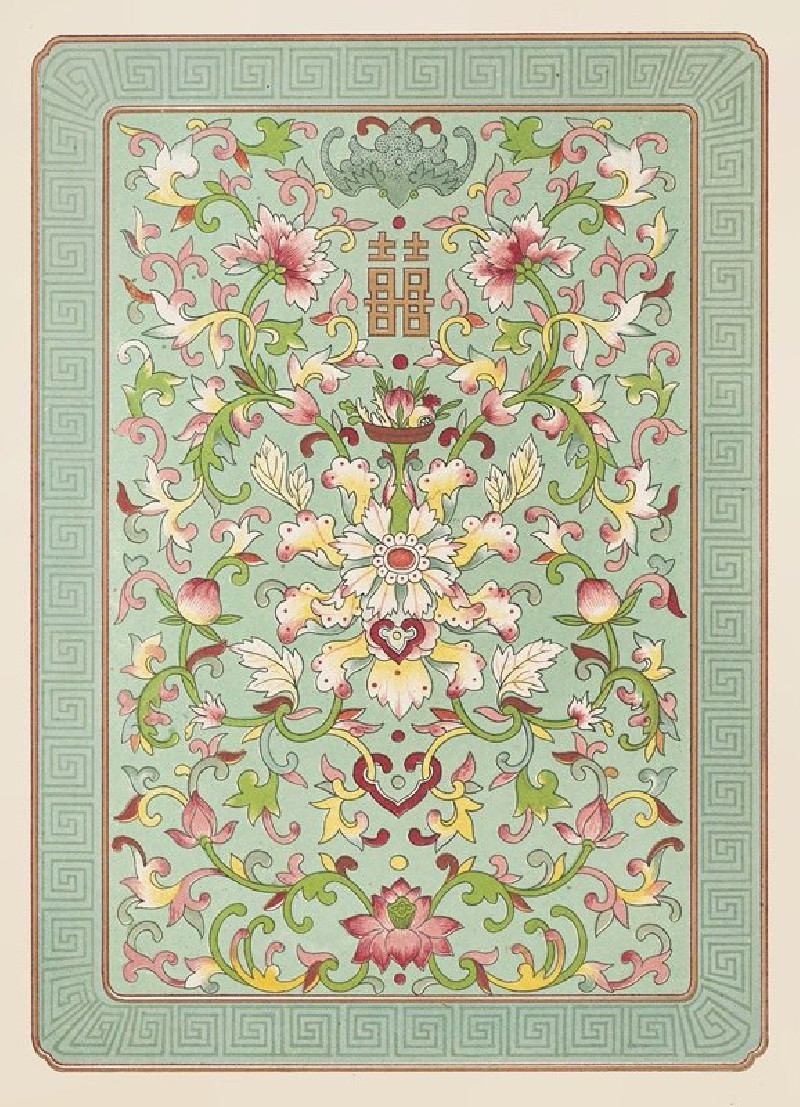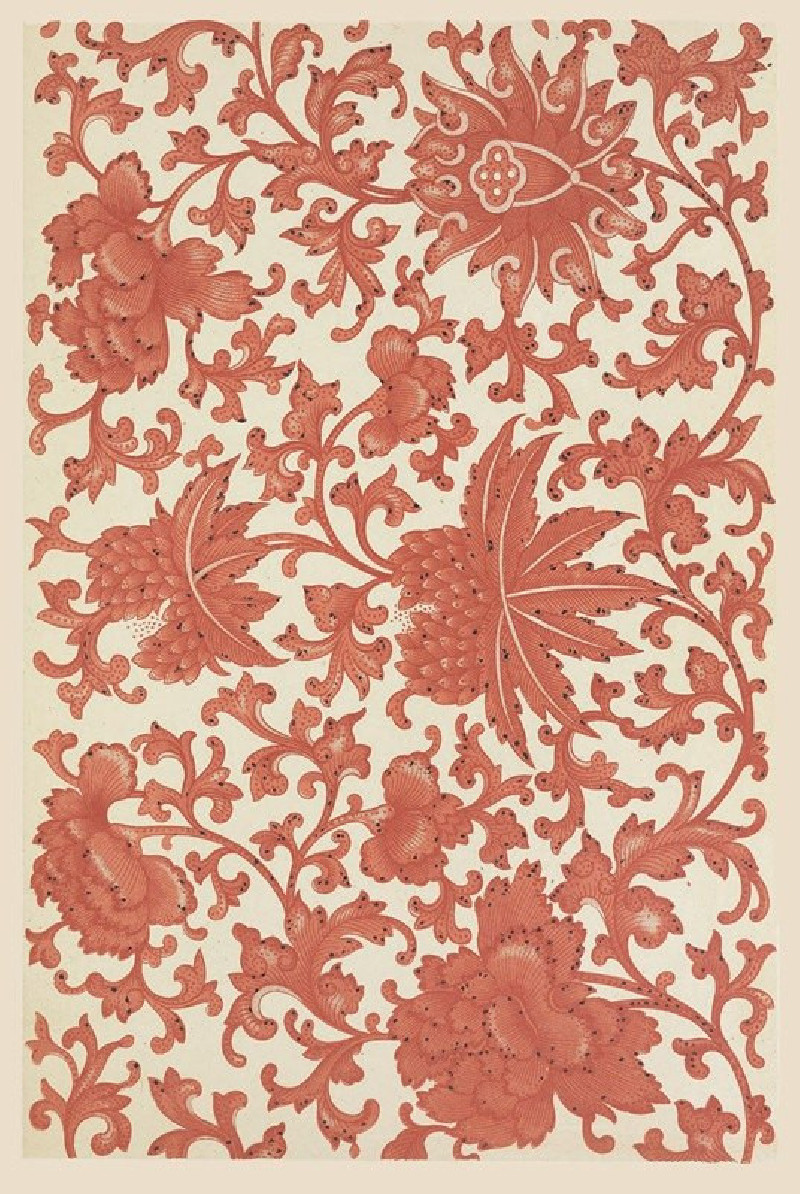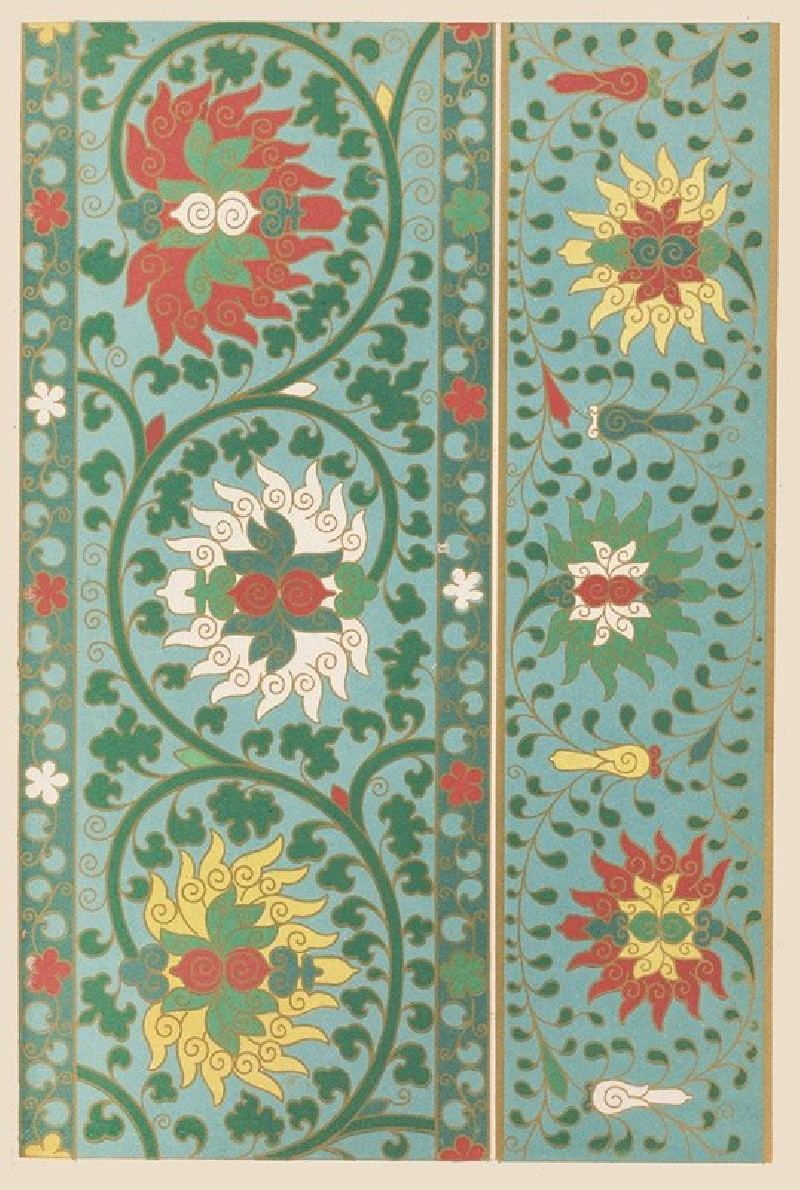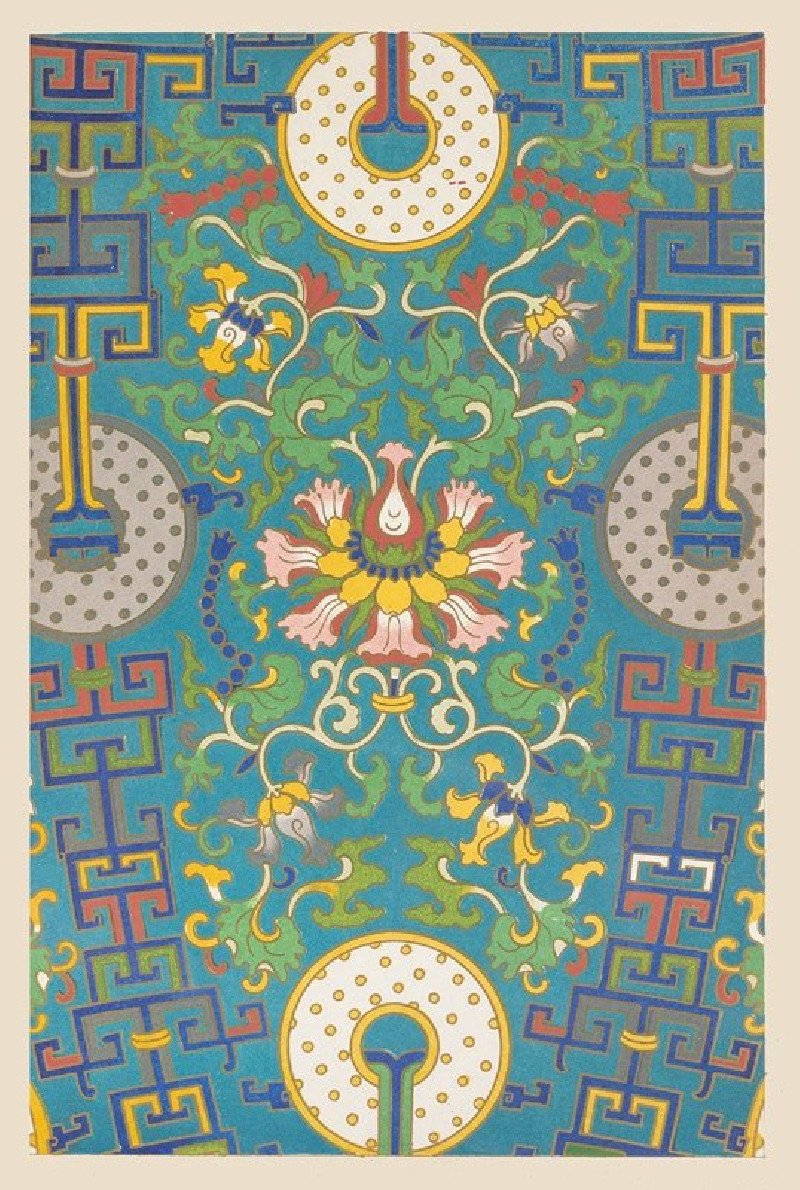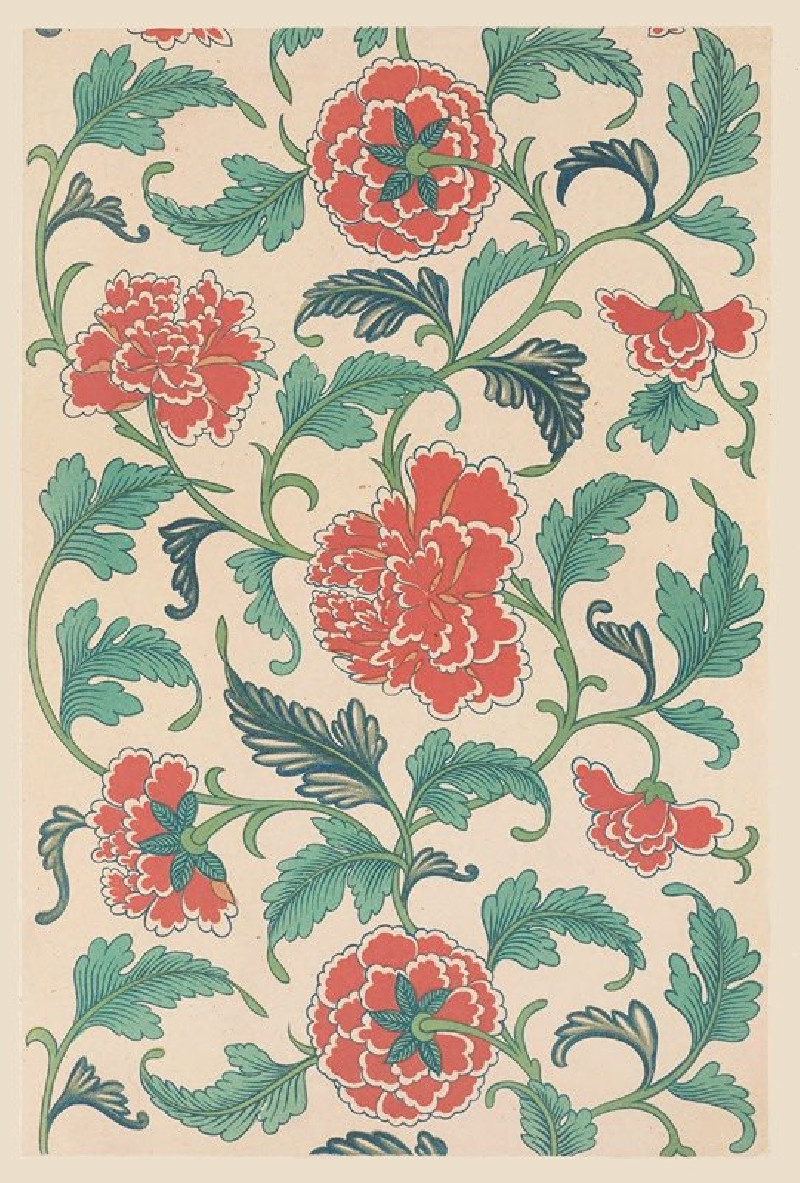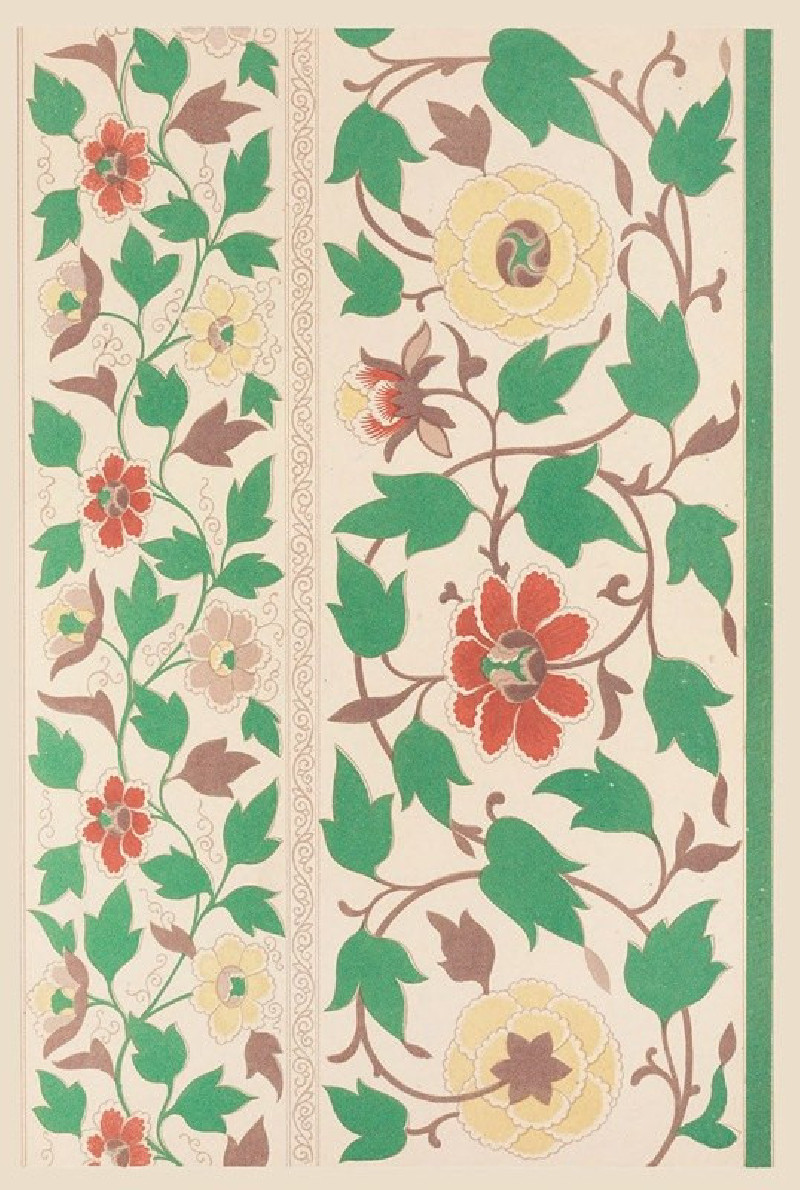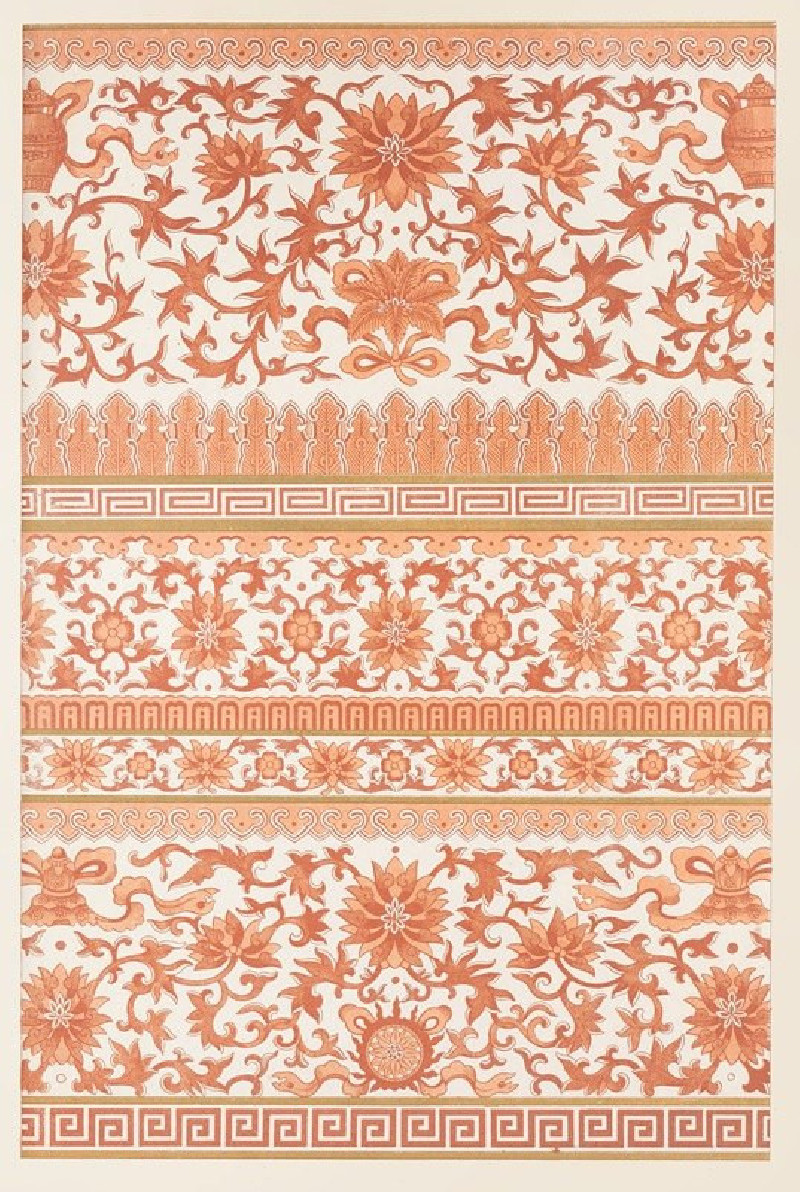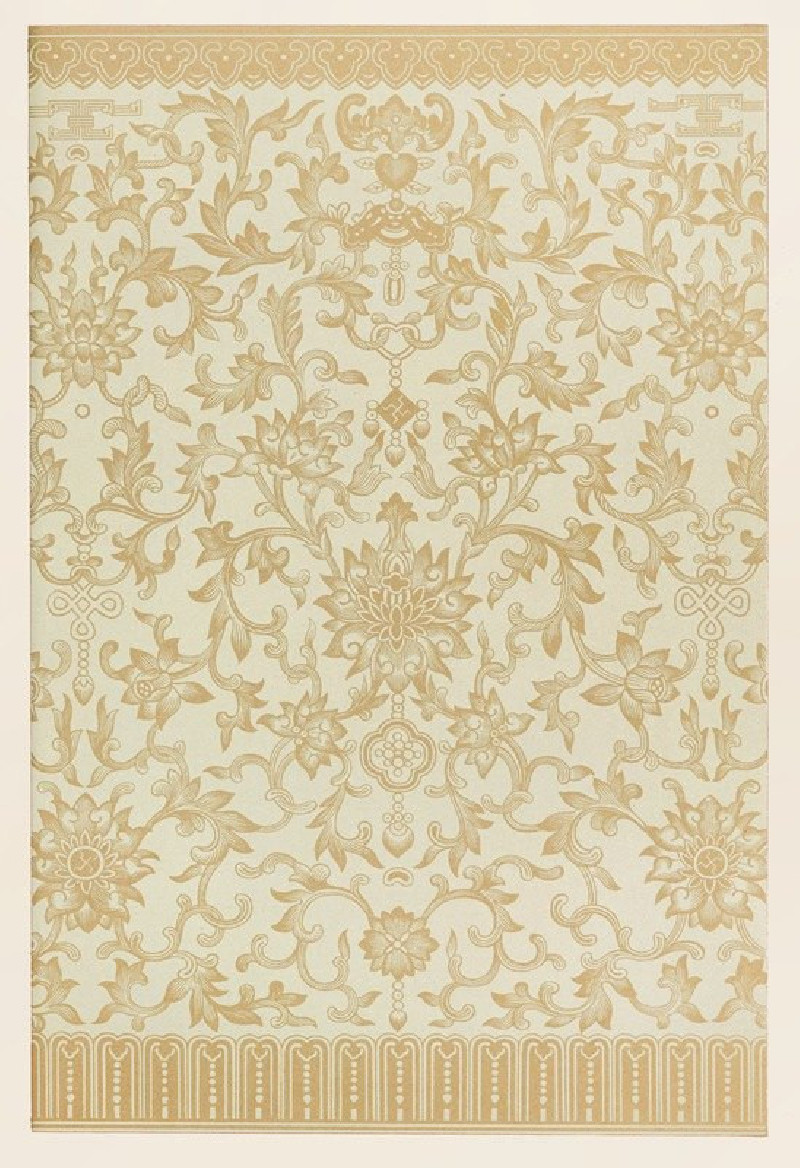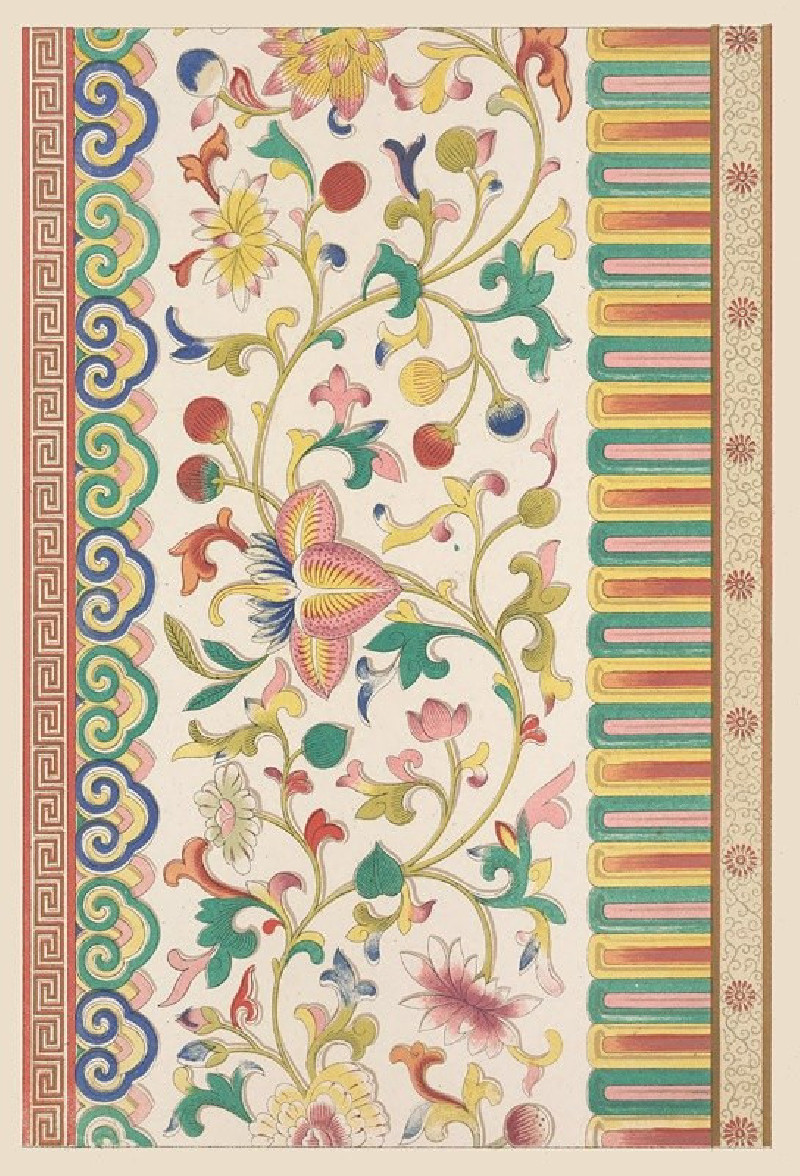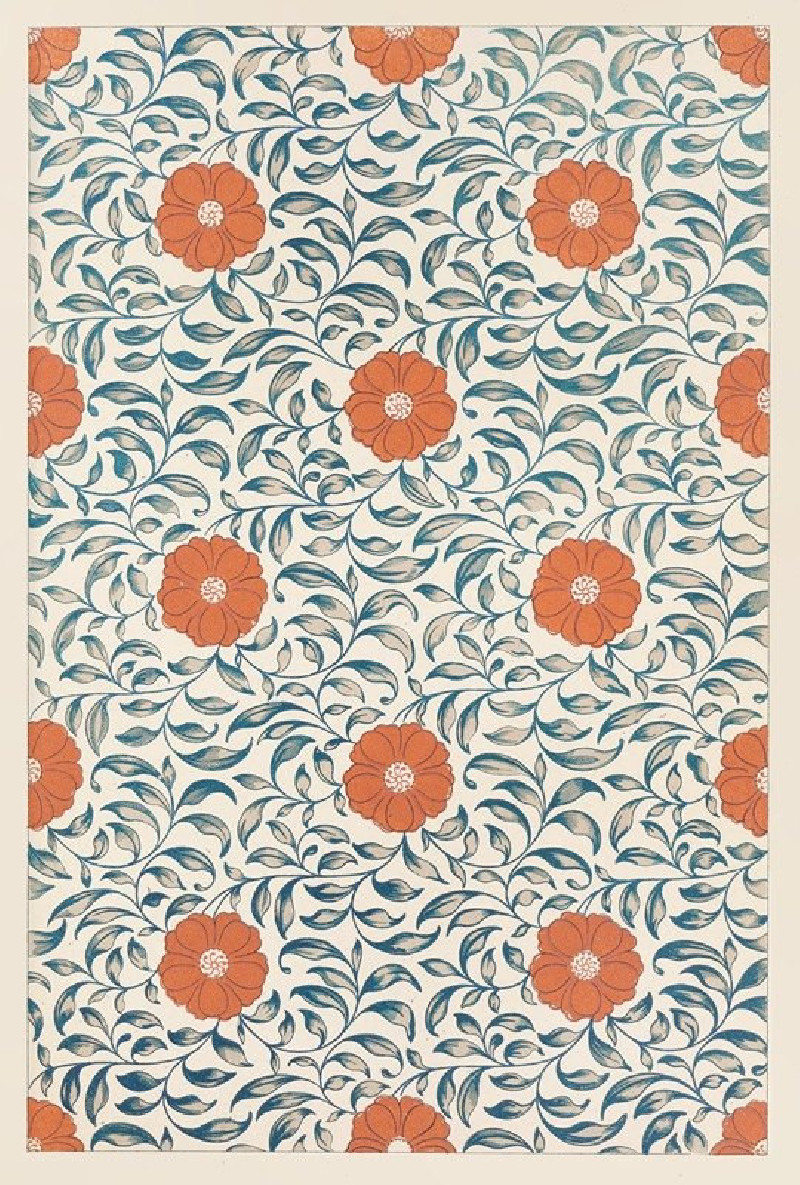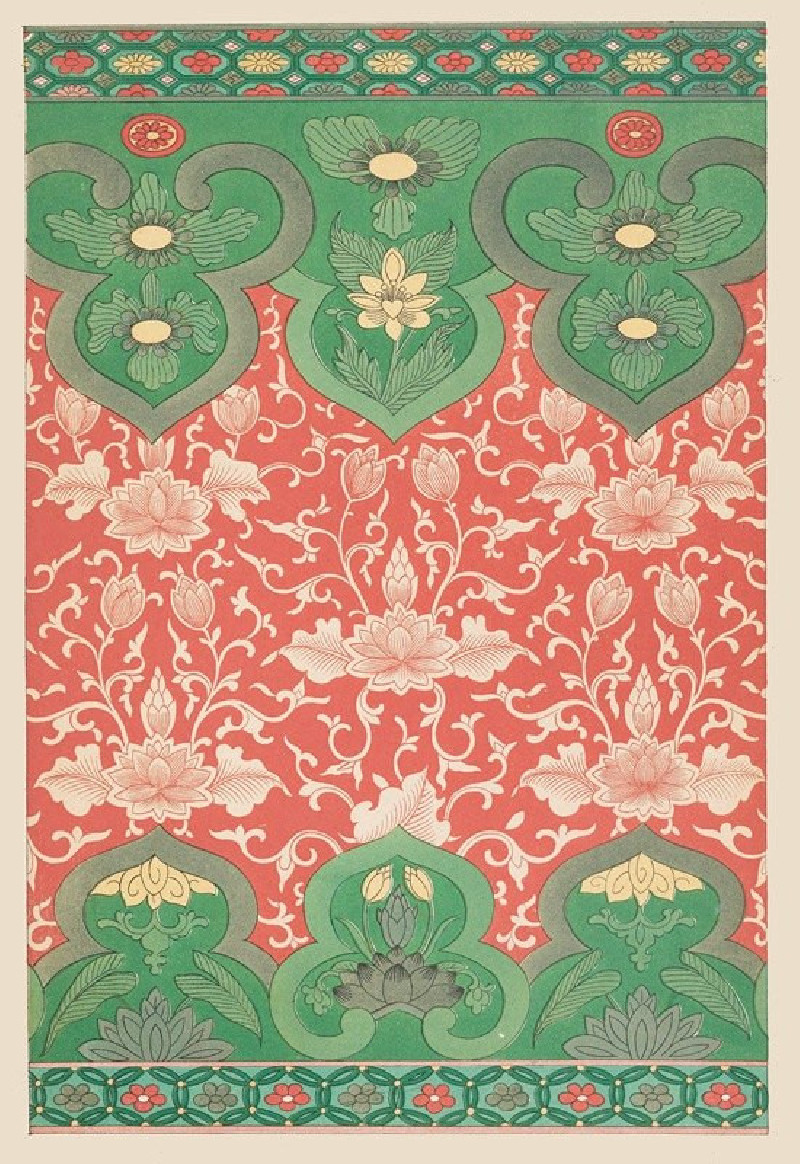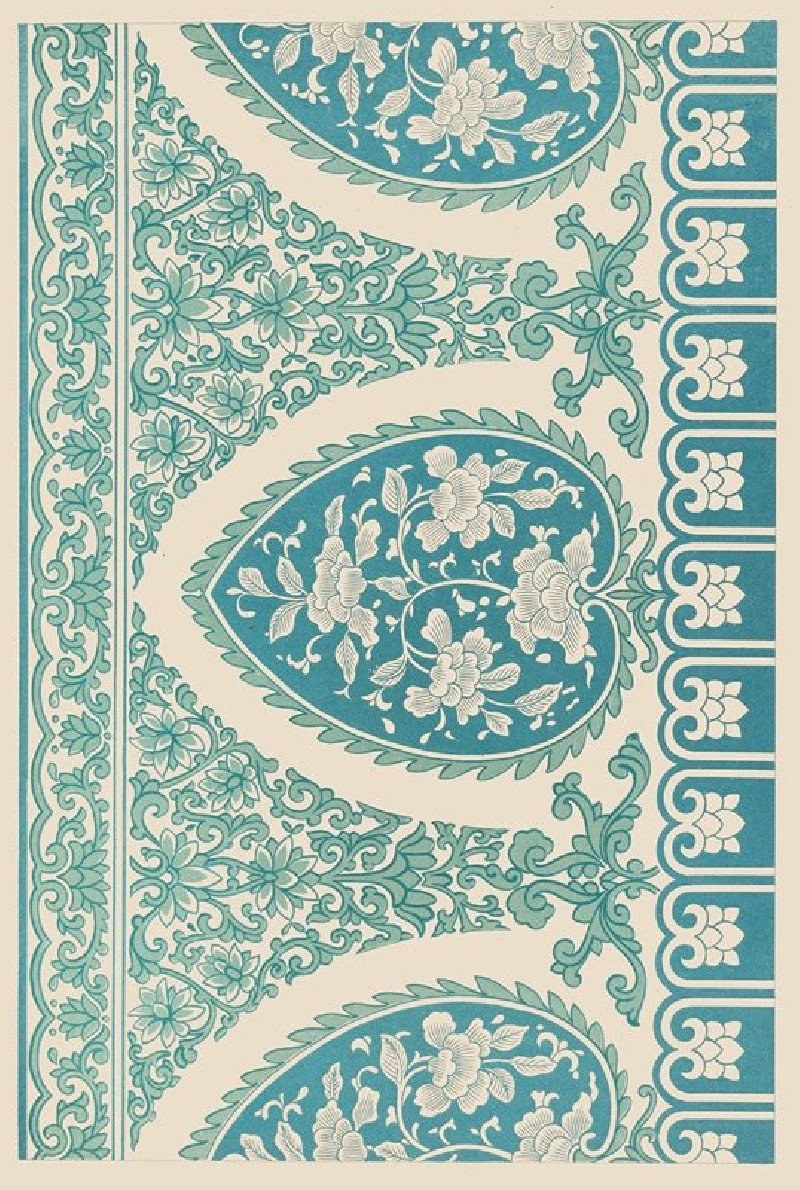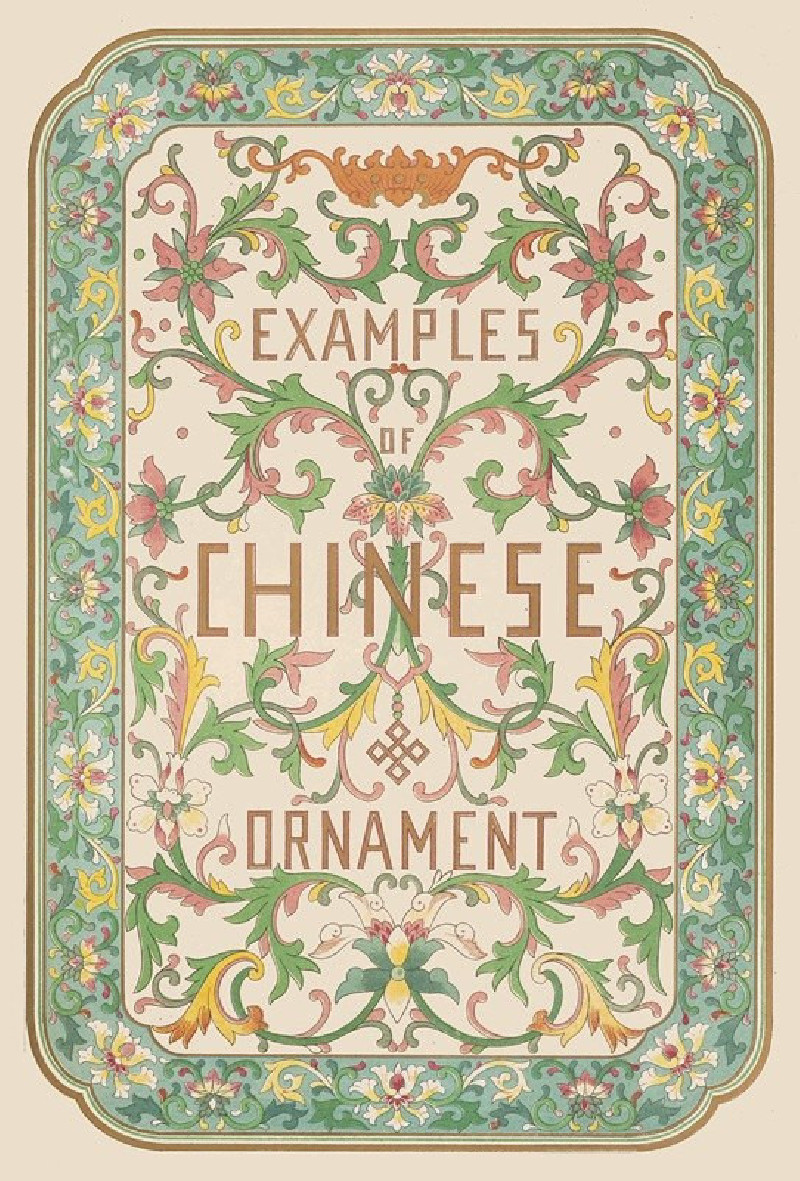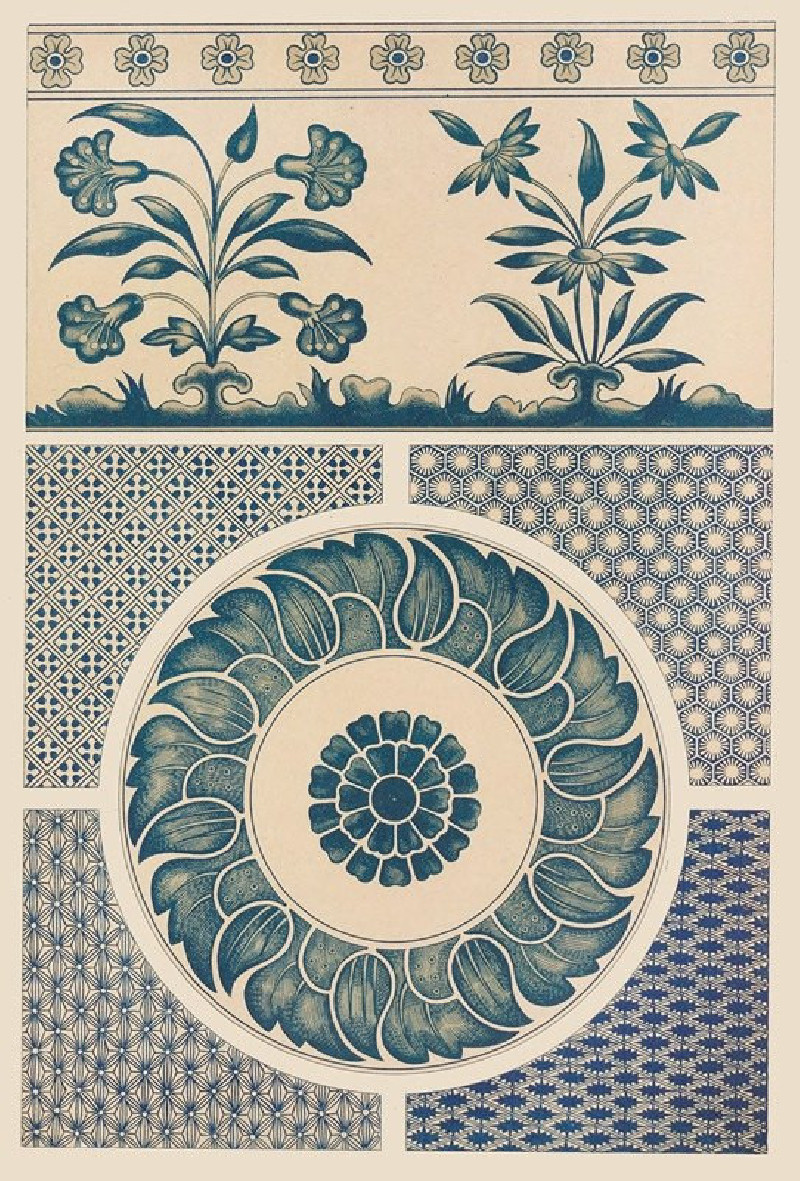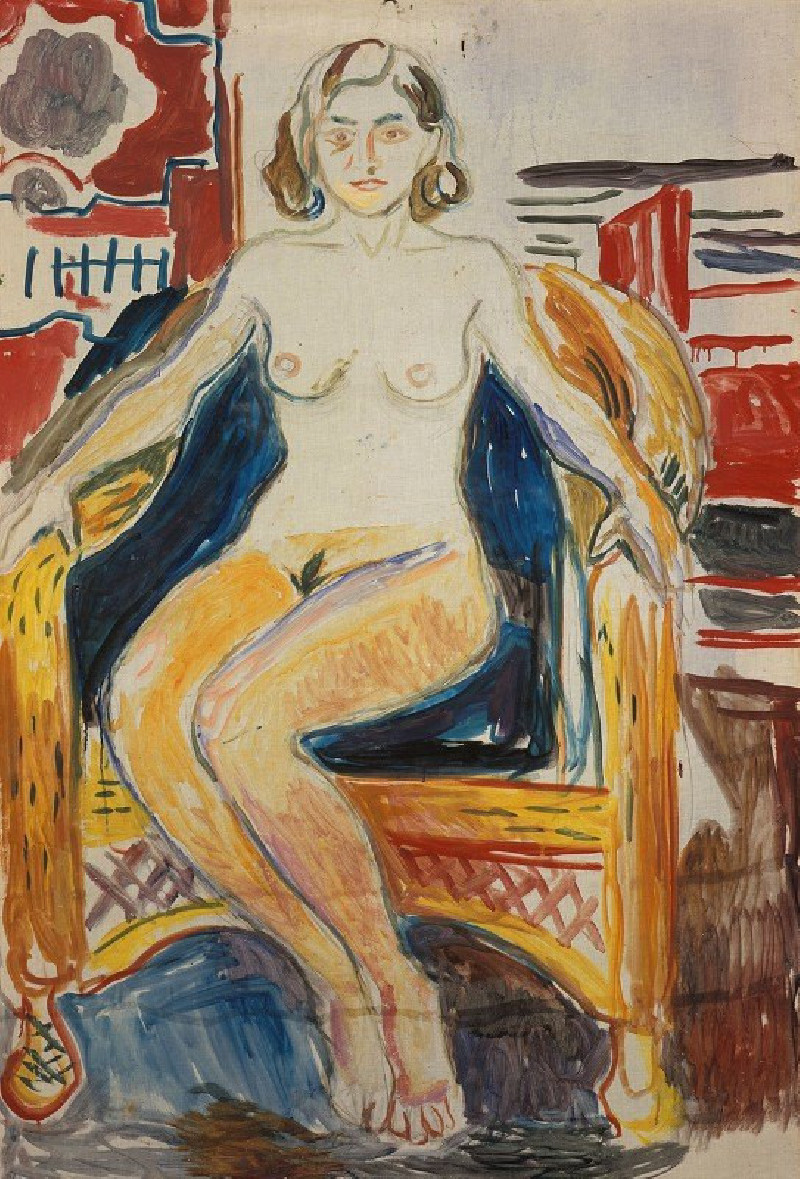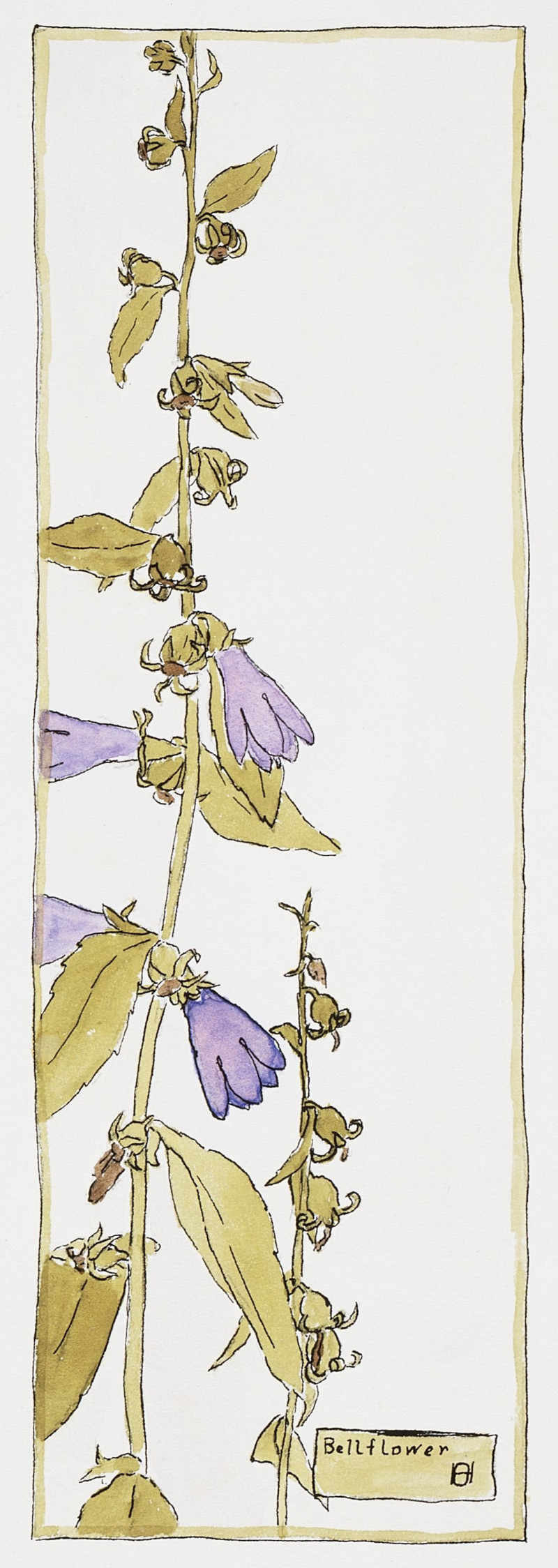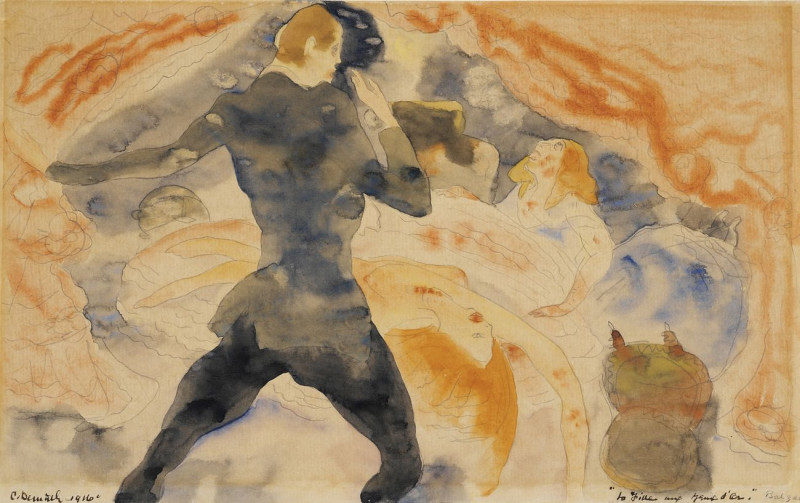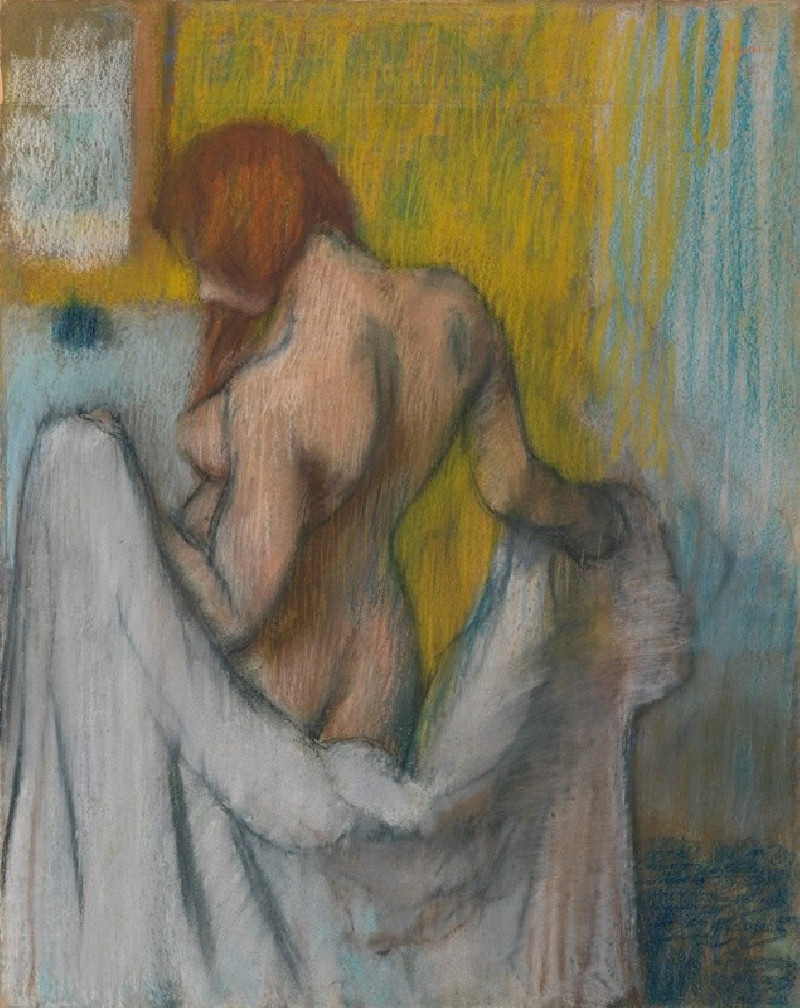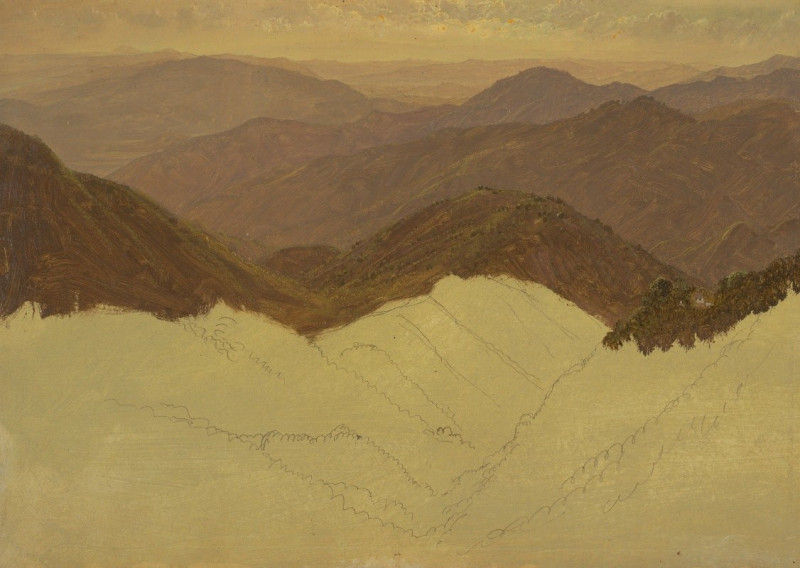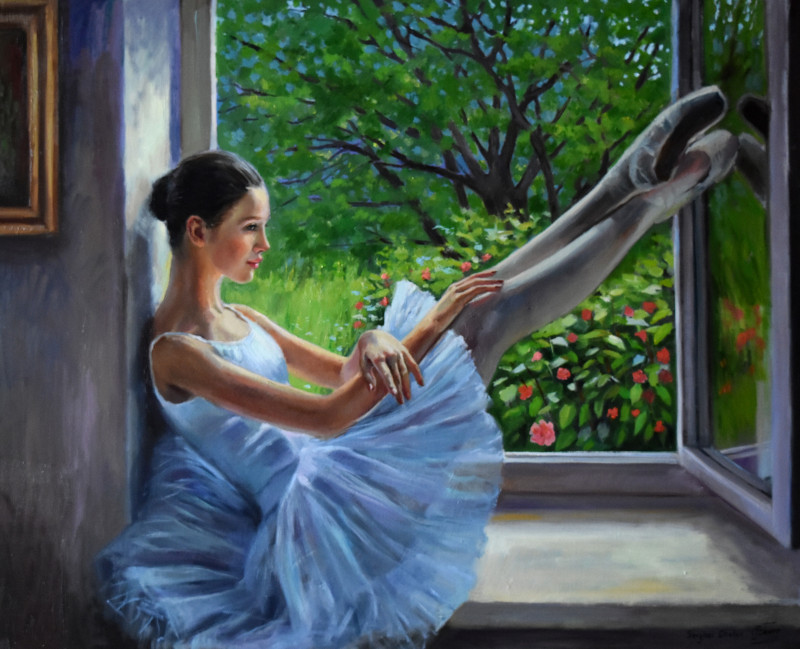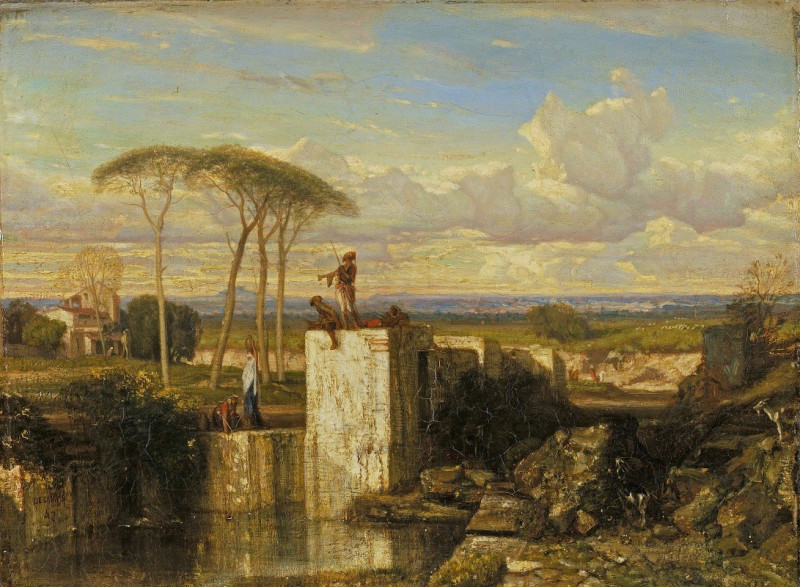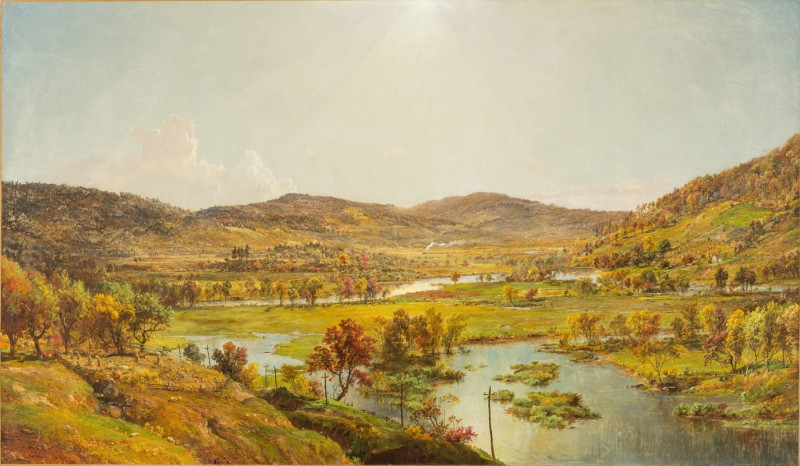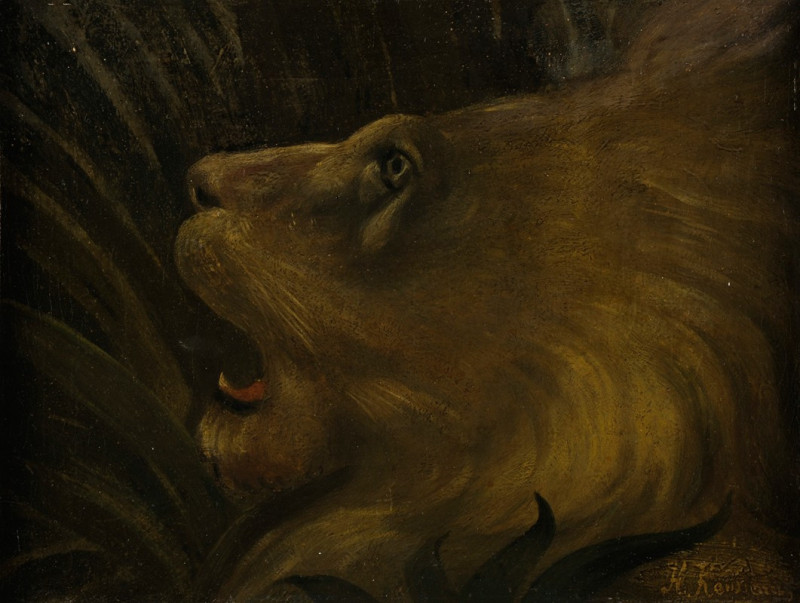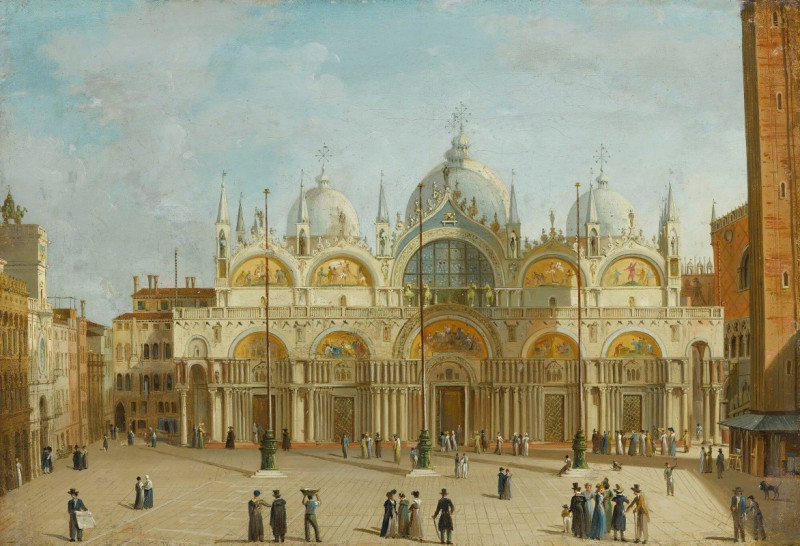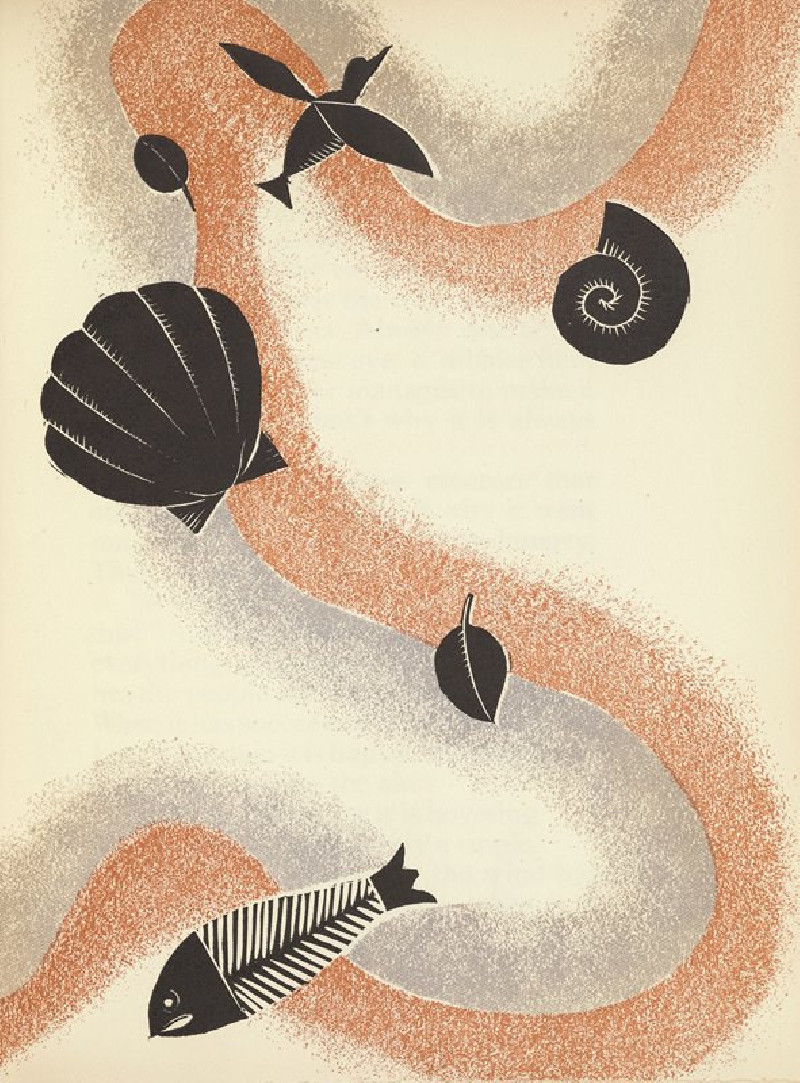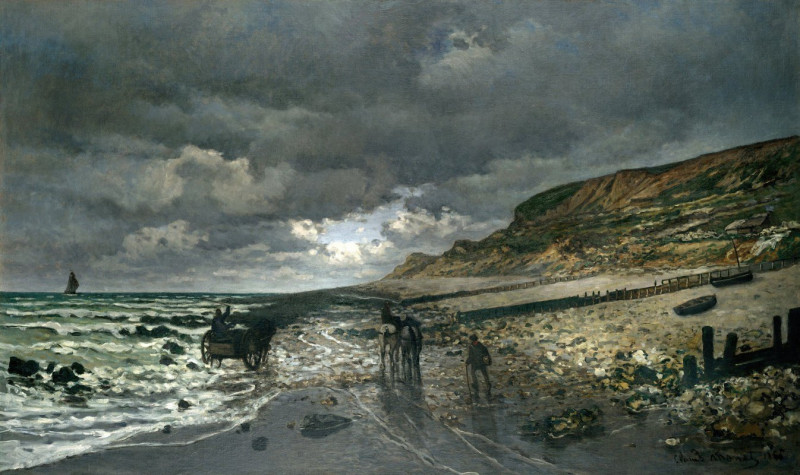Examples of Chinese ornament, Pl.67 (1867)
Technique: Giclée quality print
Recommended by our customers
More about this artwork
Welcome to a detailed exploration of "Examples of Chinese Ornament, Pl.67" (1867) by Owen Jones, a captivating example of the interplay between Western interpretations of Eastern aesthetics during the Victorian era. This splendid piece from Jones's broader collection underscores his commitment to studying and showcasing the global diversity of decorative arts.At the heart of this intricate artwork is a harmoniously arranged pattern featuring a symphony of floral motifs. The painting immediately captures the viewer's attention with its central medallion—an elaborate composition of vibrant flowers and ornamental leaves. This large, symmetrical flower is intricately detailed with layers of petals in shades of pink, white, and subtle green, radiating outward in an elaborate display of natural beauty.Surrounding this central figure are smaller, yet equally vibrant flowers and buds, symmetrically placed and blooming forth with a lively mix of oranges, yellows, and whites. These elements are interconnected by flowing green vines and leaves that create a dynamic sense of movement throughout the piece.The background's soft green hue enhances the vivid colors of the floral elements, invoking a feeling of freshness and springtime rejuvenation. This palette and the detailed renderings are characteristic of Jones's style, reflecting his meticulous study of patterns and his ability to distill essence and beauty from his sources of inspiration."Examples of Chinese Ornament, Pl.67" not only demonstrates Owen Jones's artistic prowess but also his role in the 19th-century design and his respect for and fascination with Chinese decorative arts. This piece brings a timeless elegance and a touch of historical flair to any setting, serving as a testament to the universal appeal of floral motifs in design.
Delivery
Returns
Owen Jones was an English-born Welsh architect. A versatile architect and designer, he was also one of the most influential design theorists of the nineteenth century. He helped pioneer modern colour theory, and his theories on flat patterning and ornament still resonate with contemporary designers today.

